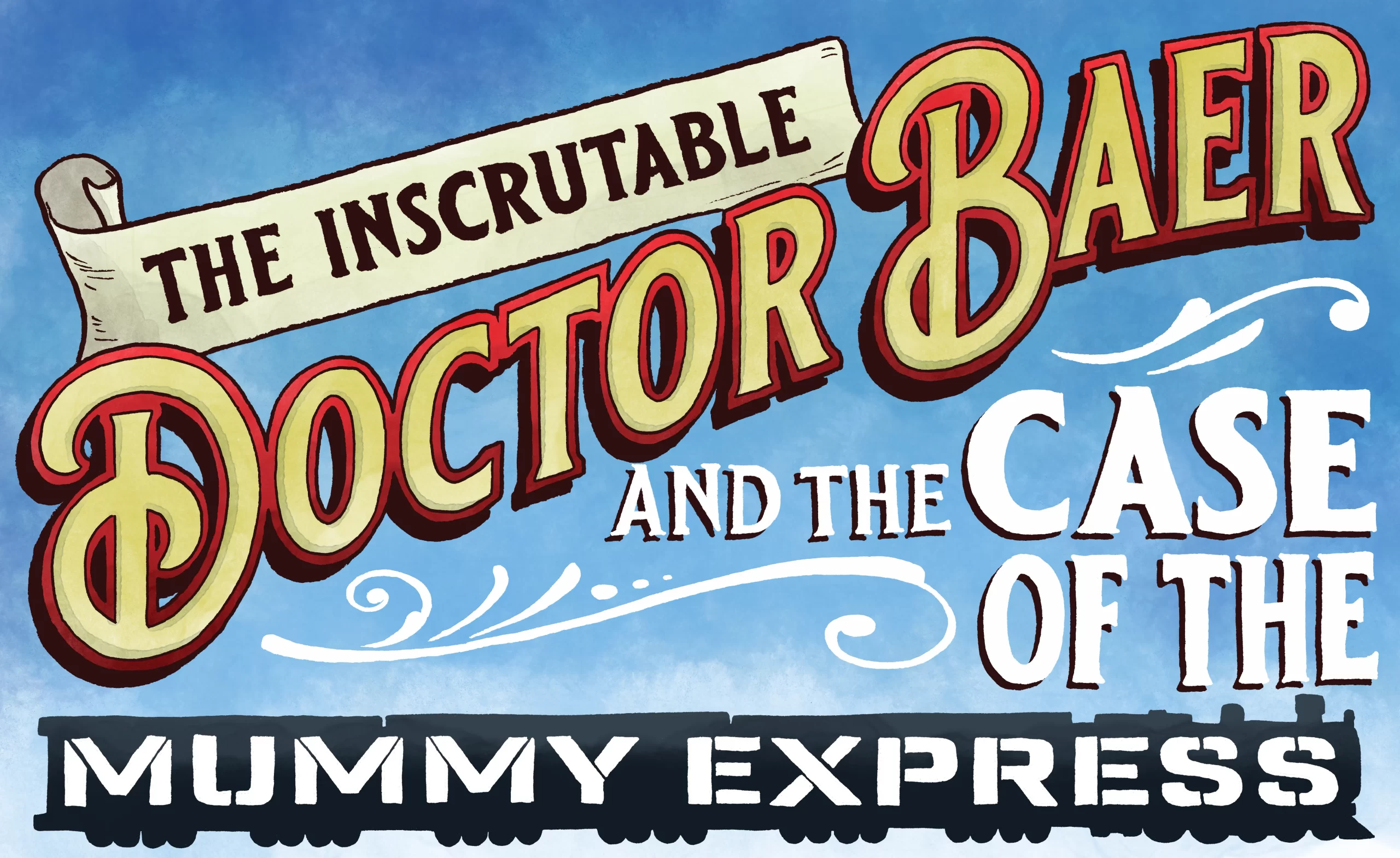I’ve made literally hundreds and hundreds of Doctor Baer talismans.

There are so many that the new challenge is finding the time to get each one listed on my Etsy store ( I’m holding a sale there until Oct 19, by the way). Inspiration will drive new designs in the months to come, I’m sure. But right now I’m ready to try some new experiments and investigations.
I’d love to make some ceremonial vessels one might find in the world of Doctor Baer. Useful objects that also carry some imagery and symbols of the spooky fictional world of the book. I gave it a shot with a Lost City of Terror mug some months back:

I hand-built the vessel and pressed the design into the clay using a 3d-printed roller made of the designs seen in the background during the fight with the giant millipedes.

But I need more practice hand-building and pressing designs.
Lately I’ve been inspired by some of the underglaze painting Anne’s been pulling off with her pieces:

But I can’t jump into that without making more vessels to paint. And I need more practice hand building pieces.
So I’m going to try to get to painting faster by trying my hand at slip casting. My hypothesis is I can make a mold of a simple, clean form to practice underglaze painting on. As I get more skilled at painting I can design more complex forms to work with. Eventually working my way back up to that Lost City of Terror mug.
So I needed:
- Plaster for the mold
- A form to make a mold of
It stood to reason that if I am going to eventually make 3d printed complex forms to mold, I might as well start with a simple 3d print to test out making molds of that material. I could start with a glass tumbler I already own, but removing glass from the plaster mold might be different than the plastic extruded by a 3d printer.
I created a simple tumbler in Blender and ran a print on my Flashforge Adventurer.

It’s a hollow form designed with a lip to catch any overflowing clay. When the slip hardens in the mold I’ll trim the lip off so I have a clean edge on the tumbler.

I then painted the form with filler and sandable primer. Once it dried I smoothed out the sides of the form with some high-grit sandpaper.

Then I attached the form into the bottom of a bucket with some caulk. I made sure to use a bucket that left plenty of room above the form.
Why create the mold upside down like this? In case the plaster had any air bubbles rising up, they’d rise to the “bottom” of the mold, decreasing any chance that they’d show up on the parts that will form the clay object.

I coated the bucket and the 3d-printed form with a thin layer of liquid dish soap. This would help release the plaster once it set.
And 30 minutes later I had the mold!

I’ll pour the slip, or liquid clay, into that well to fill it up completely. Some minutes later, the outer edges of they clay will dry as the plaster drains moisture from the clay. I pour out the rest, leaving a layer of clay stuck to the walls of the mold.
Once the clay is hardened sufficiently, I’ll cut the ring off the top of the well and remove the clay tumbler inside. With a few of these molds I can create a bunch of vessels to paint more quickly than if I was hand-building.
(I still want to practice hand-building, by the way. But right now I suspect I’ll make faster gains with underglaze painting–or at least, I think I’ll have more fun exploring underglaze painting.)
The plaster has to cure for a while, but once it does I’m eager to try my first slip cast vessel. And if it works, I’ll dig into designing some more interesting shapes to mold.
Credit to Pottery by Kent on YouTube. I had been taking a Domestika course on making 2-piece molds, but his tutorial on how to make a one-piece mold was super helpful in getting me started.




